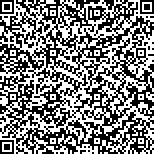下载中心
优秀审稿专家
优秀论文
相关链接
摘要

全极化微波辐射计可以进行海面风速和风向测量.由于地物模型函数本身的特征以及辐射计的各种测量噪声,通常会出现最后反演出的风向往往不是与真实风向最接近的情况.如果不进行全极化辐射计扫描观测单元与定标单元的优化设置,可能会出现风向反演的顺/逆风180°模糊性问题.这将大大降低全极化辐射计海面风向反演的精度.采用Monte Carlo方法研究全极化辐射计海面风向反演出现的顺/逆风向模糊性的特点和消除方案.根据模拟反演的结果,提出一种根据第一次扫描的第一、第二风向解和第二次扫描的第一风向解选择最终风向值的算法.该算法消除了顺/逆风向反演的模糊性,在一定程度上提升了全极化辐射计的性能,并为进一步设计全极化辐射计的星上实际应用方案提供了理论依据.
Polarimetric microwave radiometer can be used for remote sensing of ocean surface wind speed and direction. The globalminimum of the cost function corresponds to the bestestimate of the actualwind vector; butdue to the level of noise itmay not be the closest ambiguity to the true wind direction. The presence of these ambiguous solutionsmust be carefully considered in the retrieval of wind vector estimates. Expected errors in wind direction retrievals have been examined using Monte Carlo simulation analysis, as well as the maximum likelihood estimation (MLE) cost function in the presence of noise. An algorithm is proposed to obtainwind direction according to the first and second rank solutions of the first scan and the first rank solution of the second scan. The simulated results show that the algorithm can avoid ambiguous solution, and the cells near the position that along or perpendicular to spacecraft- heading vectorgive the largesterrorof retrievedwind direction. These cells can be used for cold andwarm calibration, and the residual cellswhich give smallerdirection errors can be used forwind direction remote sensing. A new scanning geometry for conical-scan is put forward.

